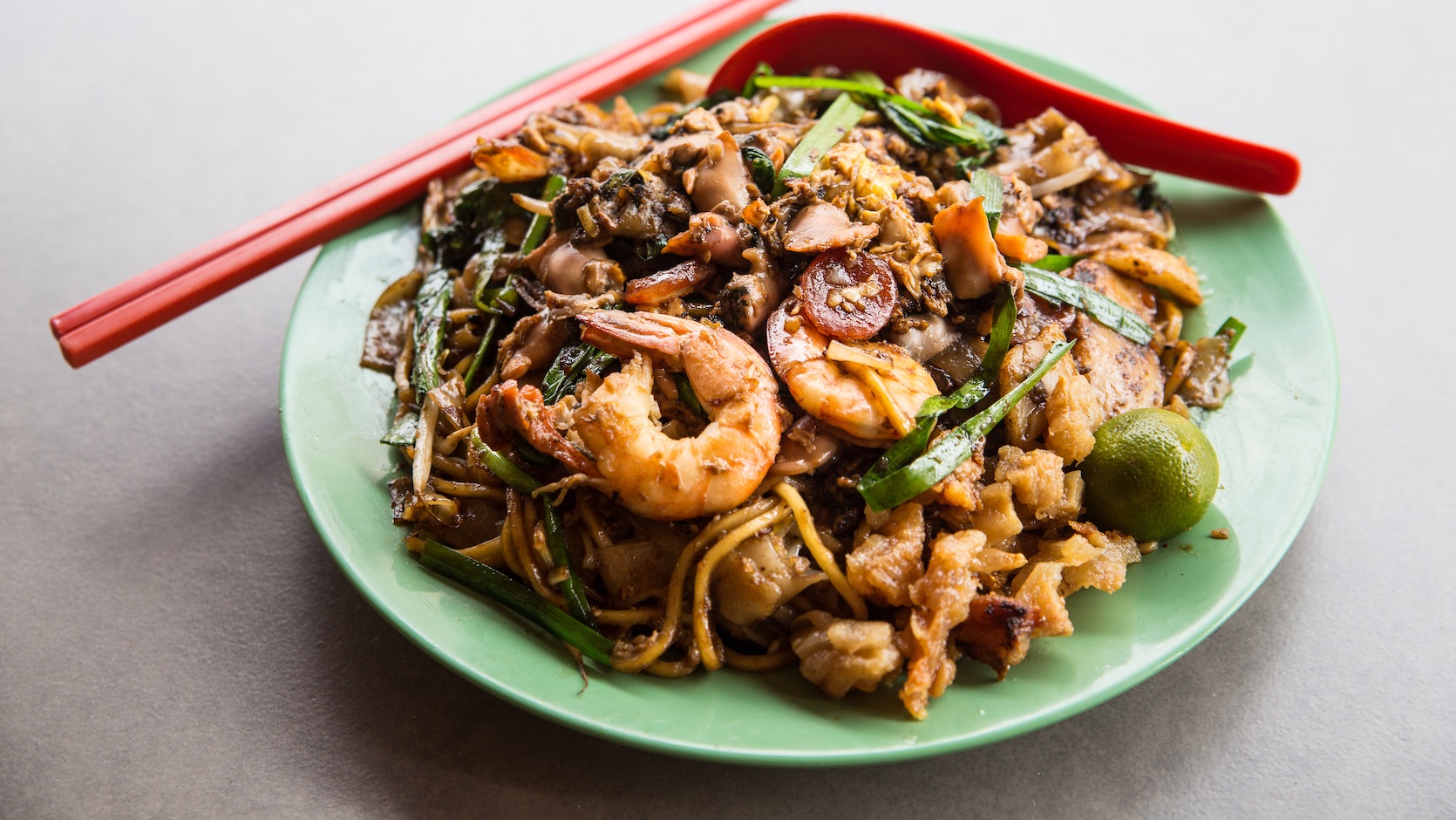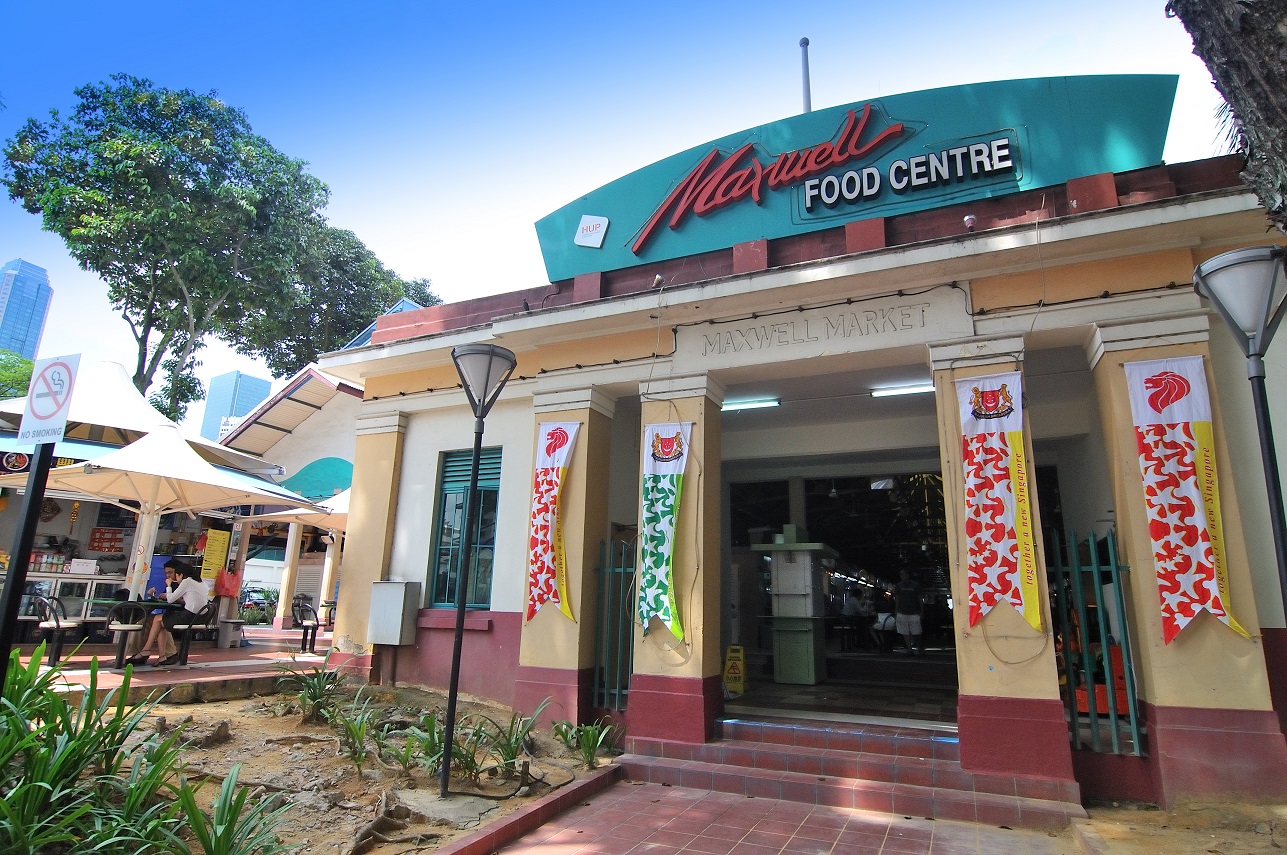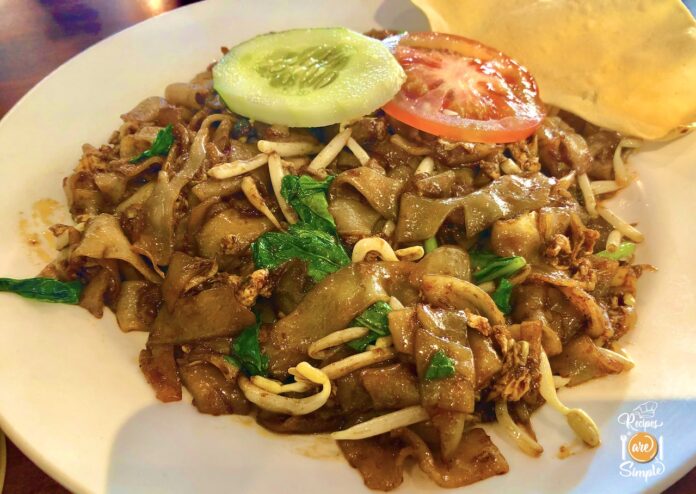In the diverse world of Southeast Asian cuisine, some dishes are more than just tasty treats – they’re cultural symbols telling stories of tradition and creativity. Char Kway Teow is one such gem, a culinary masterpiece that invites you to explore the lively streets of Malaysia and Singapore through its delightful flavors. Picture flat rice noodles sizzling in the wok, perfectly stirred with a mix of meats, seafood, and aromatic spices. Let’s dive into the fascinating realm of Char Kway Teow, where each noodle not only tastes amazing but also carries a tale of Southeast Asian culinary artistry and history.
Origins: A Stir-Fry Born from Necessity

To truly appreciate Char Kway Teow, we must first delve into its humble beginnings. Born from the necessity of creating a quick and satisfying meal for laborers, this stir-fried noodle dish evolved into a beloved street food icon. Its origins can be traced back to the hawkers of Penang and Singapore, who skillfully cooked up this flavorful concoction over blazing woks.
The Art of Stir-Frying
In making Char Kway Teow, stir-frying is the star – a cooking dance that needs skill, precision, and a good understanding of ingredients. Imagine the hawker skillfully tossing flat rice noodles in a hot wok, the clanging sounds filling the air as each ingredient joins the mix with careful expertise.
The choice of wok matters; it adds a special smoky flavor. The high heat and fast cooking not only create the sought-after wok hei, or wok breath, but also keep each ingredient’s unique texture intact, ensuring a perfect blend.
The Ingredients
Char Kway Teow is all about its diverse ingredients, each having a special role in crafting its distinct flavors. The flat rice noodles, or kway teow, form the chewy yet delicate base for this culinary spectacle. Eggs join the wok, their golden yolks blending with the noodles to create a rich harmony.

The ensemble gets richer with succulent prawns, tender Chinese sausage (lap cheong), and plump cockles, infusing a meaty, seafood-inspired dimension to the dish. Bean sprouts, chives, and sometimes crispy pork lard cubes add fresh, crunchy, and indulgent elements, further enhancing the overall melody.
The Sauce: Umami Elixir Binding it All

Char Kway Teow’s distinct flavor comes from its special sauce – a carefully crafted mix of sweet, salty, and savory elements. It combines light and dark soy sauce, oyster sauce, and sometimes a touch of chili paste. This sauce not only gives the noodles a glossy coating but also adds a rich umami flavor that’s simply irresistible.
Regional Variations
Char Kway Teow has different styles across Southeast Asia, showcasing the region’s diverse culinary influences. In Penang, it leans towards spiciness with chili paste, while Singaporean versions are milder but still packed with flavor. The Penang Char Kway Teow, in Malaysia, stands out for its unique touch, incorporating mantis shrimp and skipping Chinese sausage (lap cheong).
The Culinary Experience: A Dance of Texture and Flavor
As you take the first bite of Char Kway Teow, a culinary dance unfolds on your taste buds. The chewiness of the flat rice noodles mixes with the succulence of prawns, while the richness of lap cheong adds a savory depth. Each part contributes to the overall harmony of the dish.
The crispy pork lard bits provide a delightful crunch, and the fresh bean sprouts bring in a contrasting crispiness. The umami-laden sauce wraps around each ingredient, ensuring that every bite is a burst of flavor. It’s not just a stir-fry; it’s a delicious experience that engages all your senses.
Where to find the best Char Kway Teow in Singapore?
From bustling hawker centers to upscale establishments, the allure of Char Kway Teow transcends culinary boundaries. Here are some notable Singaporean restaurants where you can indulge in the symphony of flavors that Char Kway Teow offers:
Hawker Centers: Maxwell Food Centre and Old Airport Road Food Centre
Singapore’s hawker centers, the heart and soul of its street food culture, are prime locations to savor an authentic plate of Char Kway Teow. Maxwell Food Centre, situated in the vibrant Chinatown, hosts stalls like Tian Tian Fried Kway Teow and Ah Tai Fried Kway Teow, where you can experience the classic stir-fry in all its smoky glory. Meanwhile, Old Airport Road Food Centre, an iconic food haven, is home to Hill Street Fried Kway Teow, a stall that takes pride in its expertly charred noodles.

Casual Dining: Tiong Bahru Market and Chinatown Complex Food Centre
For those seeking a blend of tradition and trendiness, Tiong Bahru Market offers a chance to relish Char Kway Teow at Tiong Bahru Fried Kway Teow. The market’s lively atmosphere adds to the overall dining experience. In Chinatown, visit the Chinatown Complex Food Centre where Lian He Ben Ji Claypot Rice also serves a noteworthy Char Kway Teow that reflects the rich heritage of Chinatown.
Upscale Dining: Candlenut and Odette**
Even in the realm of upscale dining, Char Kway Teow finds a place on the menu, albeit with a sophisticated twist. Candlenut, the world’s first Michelin-starred Peranakan restaurant, offers a refined version of this street food classic. At Odette, located in the iconic National Gallery Singapore, you can experience the culinary finesse of Michelin-starred Chef Julien Royer with a modern interpretation of Char Kway Teow.
Local Favorites: Hill Street Char Kway Teow and Outram Park Fried Kway Teow Mee
Char Kway Teow has gained such popularity that dedicated establishments have emerged as local favorites. Hill Street Char Kway Teow, a standalone eatery, allows enthusiasts to indulge in their love for this dish with a focus on quality and taste. Outram Park Fried Kway Teow Mee, known for its flavorful rendition, is another spot where you can savor the delights of this stir-fried wonder.
Modern Twist: Hawker Chan
With the evolution of culinary trends, modern interpretations of classic dishes have also emerged. Hawker Chan, renowned for its Michelin-starred Hong Kong Soya Sauce Chicken Rice & Noodle, offers a contemporary spin on Char Kway Teow. The fusion of traditional flavors with a modern touch showcases the dish’s versatility.

East Coast Delight: Chomp Chomp Food Centre
For those venturing to the East Coast, Chomp Chomp Food Centre provides a haven for supper seekers. While renowned for its satay and grilled stingray, Char Kway Teow is a staple that adds to the diverse array of flavors available, providing a delightful option for late-night indulgence.
Whether you prefer the authenticity of hawker center stalls or the refined presentations in upscale establishments, Char Kway Teow is readily available across Singapore. The beauty lies not only in the variety of locations but also in the diverse interpretations that cater to different palates. So, whether you’re a local exploring familiar haunts or a visitor eager to dive into the rich tapestry of Singaporean cuisine, Char Kway Teow awaits, ready to captivate you with its irresistible symphony of flavors.
Char Kway Teow, a Culinary Overture
In the rich tapestry of Southeast Asian cuisine, Char Kway Teow takes center stage as a flavorful introduction to the diverse tastes of the region. From the aromatic streets of Penang to the lively hawker centers of Singapore, this stir-fried masterpiece continues to enchant taste buds and share tales of both tradition and innovation.
With each bite of Char Kway Teow, relish in the celebration of Southeast Asian culinary craftsmanship. It’s more than just a dish; it’s a symphony of flavors, a nod to the brilliance of street food, and a reminder that extraordinary culinary experiences often emerge from humble beginnings. So, whether you find yourself in the heart of Malaysia, exploring the streets of Singapore, or attempting to recreate the magic at home, let Char Kway Teow be your gateway to the vibrant and delectable world of Southeast Asian street food.




